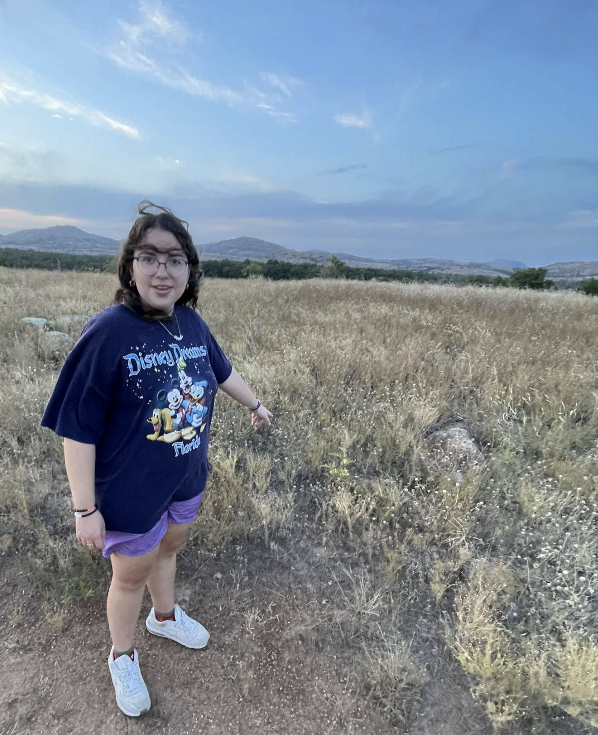By Chelsea Clark, December 2023
Working with the Native American Graves Protection and Repatriation Act (NAGPRA) is much different from working in any other department within a museum. Yes, all items in museum collections are delicate, valuable, and hold meanings, but not all items hold the same weight as the ancestors and sacred items that await proper return. There is much at stake when dealing with NAGPRA. For Indigenous communities, cultural heritage and ancestral relatives have been stolen time and time again. The weight of life, spirit, death, displacement, suffering, cultural genocide, community, and resilience are all represented within these collections. Each ancestor and each item are heavy and overflowing with emotion and life. Handling them can evoke the feelings of sadness, pain, and distress that these people may have felt near their death or each time they are disturbed. Connected to their descendants, there is also the emotions of having lived through, witnessed, and felt the consequences of Indigenous Peoples’ genocide and exhumation. Ancestral remains and objects do not lose their essence after finding their place in the ground, nor after being drug back into contemporary society.
The priority of NAGPRA is to repatriate, to return the ancestors and their religious objects to the descendant communities. The communities who have been suffering the loss of their cultural heritage and relatives since colonization. Recognizing the urgency and importance through an Indigenous lens is just one factor of the process of repatriation. Repatriation is a lengthy system that works to ensure that communities are receiving all of what is rightfully theirs and in the appropriate conditions. It requires funding, employees, volunteers, and motivation. Motivation is key to any movement, which means the maintenance of it is also essential. Recognizing the factors that play into motivation loss is the first step to combating it. Much of the collections’ tasks are mundane, repetitive, and time-consuming. This can cause one to believe that they are making such slow or little progress. Being surrounded by loads of work and mile long to-do lists can cause feelings of overwhelm. The process itself can be tricky as well. You may run into question after question about how to deal with certain situations. Sometimes, just when you think you almost have a site completed, it becomes complicated again. The fast-approaching deadlines can cause great amounts of stress. On top of it all, dealing with the emotional weight of being a witness and the holding accountability and responsibility of repatriation can be too heavy for one person. All of these factors can contribute to burn out and a loss of motivation at work. There are, however, tips and tricks to maintaining positivity and motivation for those working on repatriation of Museum collections.
Tip #1, remember it is the little things that count. You may spend hours of time simply replacing labels, cataloging, or organizing sites, but in the end, every step of the way is necessary to the process. Without the proper labels, how could there be an accurate account of what is being repatriated. With no physical or database organization, how would anything be found? Each task that is completed is essential to the main goal: returning the ancestors and sacred items to their descendant communities. You are helping Indigenous communities heal historical traumas. These communities have been suffering loss for hundreds of years. The loss being people, language, and traditions, at the hands of colonial genocide and the structures that continue today. Working towards repatriation and giving descendant communities the right to be involved in the process allows for the expansion of sovereignty and reversing the actions that haunt Indigenous Peoples. All the families who will be grateful to have their ancestors and culture back are part of the bigger picture that must be remembered. Here at the Sam Noble Oklahoma Museum of Natural History, the implementation of a progress whiteboard has helped greatly to visualize progress throughout the process of repatriation. The white board contains many to-do check boxes that wait to be completed. It organizes the tasks, serves as a reminder of what has been completed, and establishes both short- and long-term goals to help stay focused on repatriation.
Tip #2: Taking the time to check up on yourself and your colleagues can help relieve stressful feelings. Checking in on yourself can mean journaling, meditating, going for a walk, spending time outside, or participating in your hobbies and activities. Some places even keep a masseuse on deck for massages! Team meetings are an avenue to creating discussion and allowing team members to help each other. In the department at the SNOMNH, we have a weekly intern meeting to discuss different topics regarding NAGPRA, historical and contemporary issues, and progress which helps team members get different perspectives, validation, and opinions. It is important to recognize that it is a group effort, and that other people may be having similar feelings. If that is the case, coworkers may be able to show support through listening, conversing, and giving advice. Another tip is to stay open to hearing those who are having difficulties, it sometimes requires much courage to speak up about personal issues. If you notice anyone showing signs of extreme burn out or lack of motivation, reach out to them, or someone they may feel comfortable with, about their well-being. Creating a space for open and safe conversation at work allows for a better understanding of your teammates and the goals you are all working towards.

